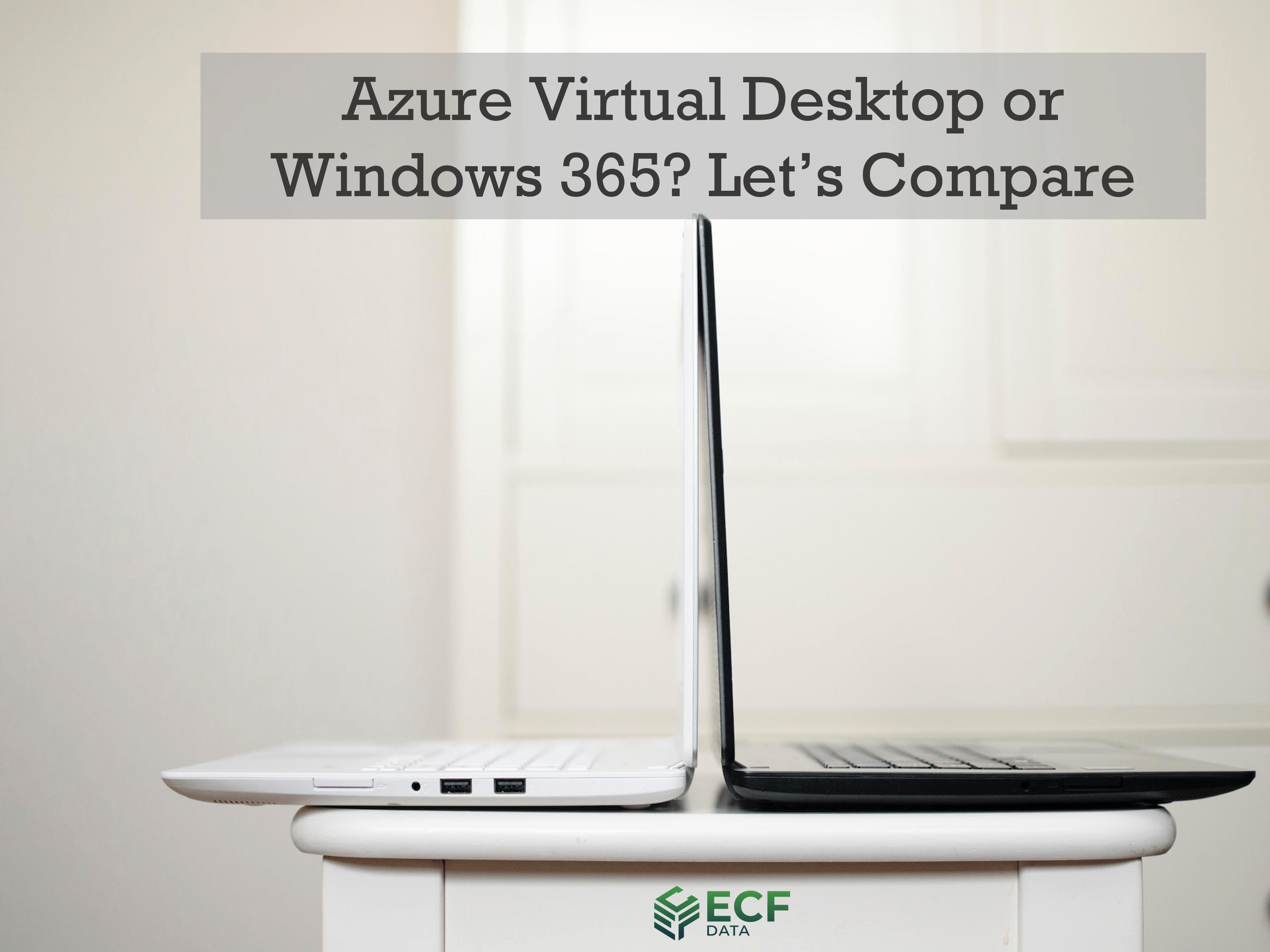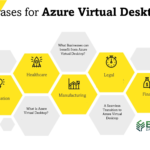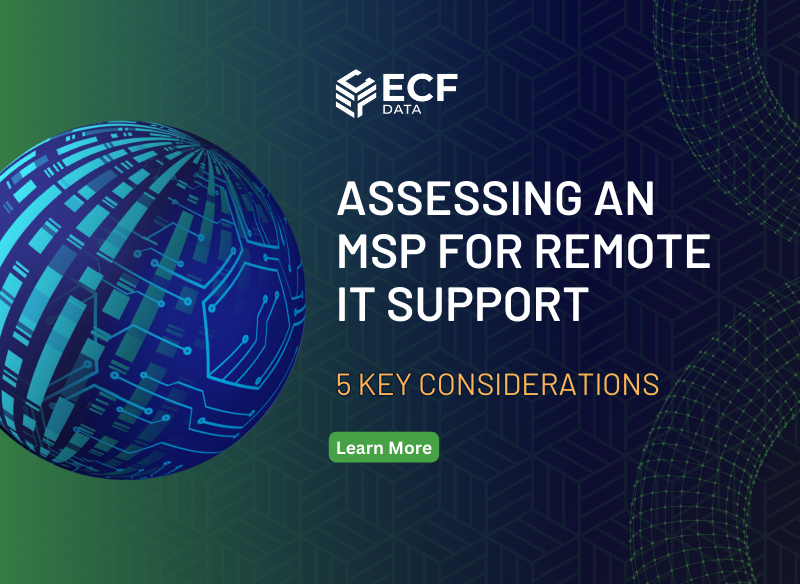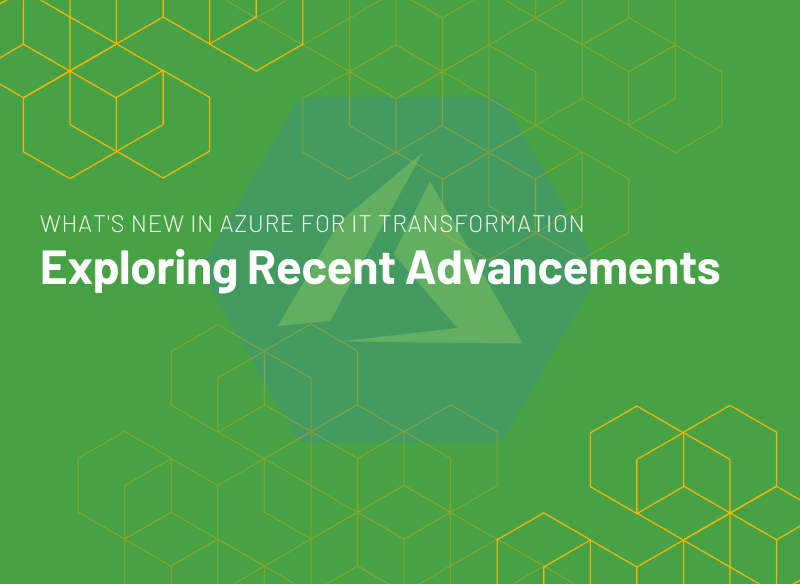-
By: Janina Criador
- IT Consulting
- August 24, 2022
- Comments 0
Azure Virtual Desktop or Windows 365? Let’s Compare.
COVID has brought a seismic shift, not only to how we live but also to work. From most of us thinking that offices are the only zone for work, businesses have now embraced the hybrid and remote environment. According to the CEO of Nowsta, Nick Lillios, 2022 is the year for flexible work. And 72% of users prefer this model to the traditional office set-up.
To cater to this rise, Microsoft introduced a full suite Virtual Desktop Interface called the Windows Virtual Desktop. It integrates smoothly with Modern Workplace, and it can be incorporated on Azure for cost control and role-based access control (RBAC). WVD, however, doesn’t fit all businesses. Because of this, Microsoft split it into two: Azure Virtual Desktop and Windows 365. While both are integrated into the Microsoft suite, they target different sets of clients.
What’s the difference between Azure Virtual Desktop and Windows 365?
Both the Azure Virtual Desktop and Windows 365 are referred to as “Desktop as a Service” providing a superior remote work experience, built-in security, flexibility, and cost-savings. They function as a cloud computing process and virtual desktop workspaces for professional and personal use. Continue reading as we take a deep dive into both software solutions so that you can assess which fits your company better.
What is Azure Virtual Desktop?
The Azure Virtual Desktop functions as a cloud-based and cross-platform system. It is perfect for those interested in flexibility across storage, networking, profiles, costs, and VMs. A cloud Virtual Desktop Infrastructure (VDI) lets you configure your infrastructure entirely and manage the resources supporting the virtualized infrastructure using Azure’s autoscaling and pooled resources. The cloud-based platform can be accessed using various devices by leveraging their existing Windows licenses.
What makes Azure Virtual Desktop Standout
- Virtual Environments: Affordable, flexible, and scalable
- Workload: No requirement for a single gateway serves investment to manage several host pools and run concurrent workloads
- Role assignment and Data collection: Users can collect data and assign roles for error analysis and workflow configuration
- User account Creation: Inbound ports are unnecessary to expose
- Representational State Transfer (REST): Create, edit, locate, and withdraw access to applications, programs, and documents through REST
- Session Resources: Simultaneously activating multiple sessions lessens costs
The Azure Virtual Desktop is perfect for:
- Organizations that are comfortable with VDI solutions and desire to upgrade to a one-of-a-kind technology from Microsoft
- Companies that need the flexibility of customized environments
What is Windows 365 Cloud PC?
Despite having AVD, one of the most comprehensive infrastructure-as-a-service (IaaS), Microsoft still released a seemingly similar product, Windows 365 Cloud PC. Looking at it, Microsoft’s Windows 365 offered something different. It provides ease of use and wide customer adoption. Suspending trial accounts because of the unexpected rise of usage only proves that it doesn’t capture a limited audience.
Marketed as “a fresh way of experiencing Windows 10 and 11,” W365 is Microsoft’s newest DaaS solution offering. It allows users to stream their settings, apps, and data using any smart device, including Linux, macOS, and Android, from any location. There’s no need to host the applications and operating system locally and consume both compute and storage resources. From productivity, financial, and human resource lens, this opens your business to more opportunities.
What makes Windows 365 stand out?
- Real-time Collaboration: Through Teams, users can collaborate at the same time using applications like Word, Excel, or PowerPoint
- Numerous Pricing Choices: Two pricing plans are available for Windows 365 – Enterprise and Business. The Business Plan accommodates up to 300 users while the Enterprise Plan supports an unlimited volume of users
- Unlimited Access: The Microsoft 365 suite can be accessed at any location and time
The Windows 365 is perfect for:
- Organizations that have not been serviced by Azure Virtual Desktop before
- You adopt a dispersed, hybrid, or seasonal workforce and want your PCs managed
The Difference between Azure Virtual Desktop and Windows 365
Generally, AVD offers maximum control over remote applications and virtual desktops. Windows 365, on the other hand, securely streams your customized Windows experience to any smart device. The latter prides itself on simplicity, while the former is created as a more flexible option. It also differs in the following aspects:
Business Size
Because Windows 365 is built as a more straightforward solution, so it suits small to medium businesses (ideally up to 300 seats) best. Meanwhile, the Azure Virtual Desktop is created for those that need complete control over app streaming capabilities and virtualized infrastructure.
Pricing
Both virtual desktop services offer different pricing models. Azure Virtual Desktop offers a pay-per-usage system. Your Windows 10 or 11 license will also dictate the rates, depending on whether you use applications alone or with a combination of desktop services or apps. Because of this, your monthly charges will oscillate depending on your usage.
Windows 365 is the opposite because it has a fixed-price system. The usage is not indicative of your monthly charges because it will always be a flat fee.
Architecture and Computing
Both AVD and Windows 365 share the same global control pane and run on the Azure cloud architecture. The Azure Virtual Desktop utilizes session host VMs, not cloud-based computers. It means that they can be used as personal computers and pooled desktops. Windows 365, conversely, is a virtual machine permanently assigned to one user.
System Administration
Compared to Windows 365, Azure Virtual Desktop ranks higher for administrative flexibility as they get the option to build their desired storage type, security settings, and network router through AVD. With Windows 365, administrators should decide on the settings saved on the cloud host. These settings will stay fixed until and unless the administrator resets them.
Onboarding
Users of the Azure Virtual Desktop are onboarded via a portal, taking it weeks to be finished. In Windows 365, the process takes quicker and more accessible, approximately a couple of minutes or just a few hours to complete. Once the hard drive, CPU, and RAM are chosen and paid, Microsoft will send an email regarding login details, and you’re good to go.
Management
Azure Virtual Desktop and Windows 365 deliver a varied IT admin experience. Windows 365’s goal is to simplify management by pivoting the same set of tools to govern both virtual and physical PCs and managing current physical desktop assets. AVD, adversely, banks heavily on Azure management, so there’s significant room for flexibility.
Partnering with the Top 1%
In summary, it’s not the best miracle solution that Microsoft created. It’s about what’s best for your organization’s needs. That’s why we’ve made this blog because, in ECF Data, we need to help you arrive at the right remote desktop solution. Achieving the highest and most coveted partnership level from Microsoft is one, but what we do in ECF data is show you the true definition of partnership- go beyond the profit and find a solution or system that would positively impact your organization.
We’re here to help answer your questions and give insights if in case you’re still confused about. Simply click the button below to connect with our experts.









